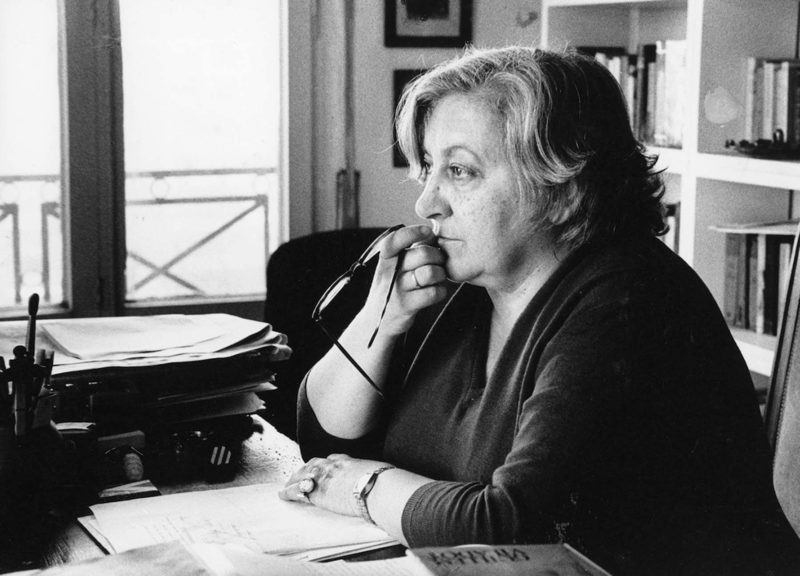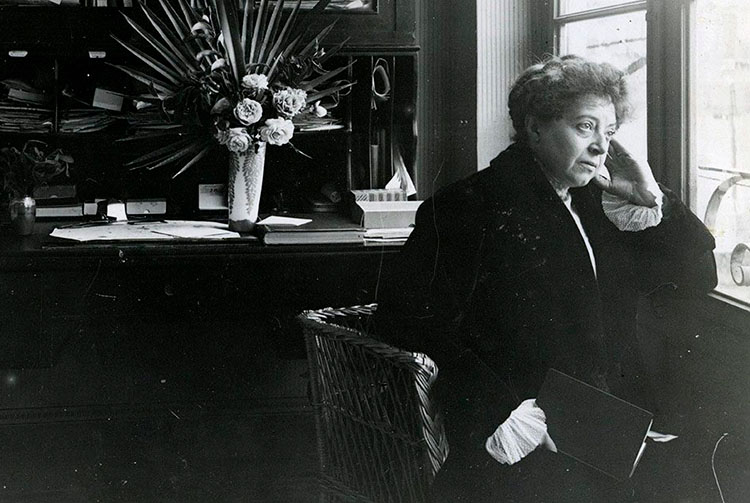

Montserrat Roig and the recovery of its memory
They tried, but they could not whitewash history. The memory of the past has to endure in order to learn from mistakes and not fall into the same traps. The victors were determined to alter historical reality and keep the ‘I’ above the ‘you’. But, winds from the north helped to change the situation and, with will, perseverance and the courage of many women, they managed to put things in their place. We continue with the historical exercise that the 11Onze agent and historian, Oriol Garcia Farré, is giving us on the approach to the History of Contemporary Women.
The establishment of ultra-conservatism within Spanish society – after the Civil War – was only a momentary effervescence lacking in real solutions. The international legitimisation obtained by the regime, which materialised at the end of the 1940s and had unsettled the opposition, did not bring any substantial improvement in terms of economic stability, nor in terms of the structural improvements Spain needed. On the other hand, repression did make it possible to achieve strict control over demands in all areas.
But twenty-five years after the end of the Civil War, Francoism was given a second chance to transform itself. The power offered by the massive influx of foreign capital – under the supervision of the International Monetary Fund – allowed the regime to move from autarky to unprecedented economic growth. It was through the implementation of the famous stabilisation plans initiated in the late 1950s that Spain entered the 20th century.
And to commemorate that event – the end of the war – Francoism launched an extensive propaganda campaign with the sarcastic slogan: “XXV Years of Peace”. The event served to exalt and legitimise the regime internationally as the guarantor of peace, order, progress and stability. Blinded by “desarrollismo”, the Francoist dictatorship took advantage of the event to spread its extraordinary political oxymoron: organic democracy – now evolved into a parliamentary monarchy – which would allow it to survive for a few more decades. Many more!
Even so, it was still only a facelift on the outside, given that social and political improvements were still to come on the inside. Then, unknowingly – or not – the “economic miracle” favoured the emergence of the consumer society that would contribute to greater mobility of the population, which would give them access to a different type of information. All of this would lead to a progressive loss of influence of the Church – especially in the domestic sphere – and the emergence of new social and sexual habits.
The progressive European model led the regime to evolve
Fashions and customs from Europe brought about a significant change in the mentality of the 1960s generation. In spite of everything, openness – following European canons – forced the regime to accept the return of women to the world of work, which, together with the arrival of foreign tourists and the resurgence of feminism, caused the Francoist model of women – submissive, domestic and Catholic – to gradually crumble.
Nevertheless, Francoism fought this foreign social interference to the very end. From the airwaves, the regime supported the radio programme ‘Consultorio de Elena Francis’, which became an authentic sociological phenomenon for decades. Therefore, the dictatorship – through the ‘Women’s Section’ – used this medium to continue transmitting its ultra-conservative ideology and morals toward women.
The ‘Consultorio de Elena Francis’ recommended that women should be in self-denial, resignation, look the other way, turn a blind eye, be patient, wait for things to change or sacrifice themselves for their children and family. In reality, the background to women’s daily lives was different: single housewives, relegated to the home and housework, sexuality linked to motherhood, homosexuality ignored or rejected, an indissoluble marriage and guilt always attributable to women. Outrageous!
The official discourse pivoted towards “desarrollismo”, the welfare and progress of Spain, and the regime tirelessly sought to leave behind all echoes that would lead to the recovery of the memory of the Civil War. For this reason – and intentionally – the voices of thousands of people who had to cross the border in January 1939 were gradually silenced for decades. Thousands of exiles had been officially rejected by the Dictatorship and forced to become stateless.
“Spaniards, Franco is dead”.
After the death of the dictator, many disturbing questions arose within Spanish society. One of the first was: What had become of the exiles? Montserrat Roig y Fransitorra (1946-1991) answered it.
Montserrat Roig’s work ‘Els catalans als camps nazis‘ (1977) showed a reality hidden by Franco’s regime and unknown to many of the generations born after the 1940s. She gave a face and a voice to the entire generation that had to go into exile because they were at odds with the war’s victors. Roig managed to undo the fear that prevented many of the protagonists of exile and the Holocaust from speaking out. She recovered from anonymity such powerful women with such an intense life as, for example, Neus Català, who gave an account of her life as a resistance fighter in France and her stay in the Nazi concentration camp of Ravensbrück.
The echo of this document of testimony about the life of exiles in Nazi concentration camps was so immense that it brought Roig great notoriety in the society of the late 1970s. A few years later, she would expand the story of the deportees in the third part of his novel ‘L’hora violeta’ (1980). Before working on the forgotten exile, the author – winner of the Sant Jordi Prize for her novel ‘El temps de les cireres’ (1976) – had sought a meaning to life – from Natàlia’s feminine point of view – in late-Francoist Barcelona. For all these reasons, Montserrat Roig would become one of the most widely read and admired writers in contemporary Catalan literature. In fact, her aura still lives on!
From this point onwards, however, Montserrat Roig’s narrative would gradually change, as she experienced a profound disenchantment with the new political reality that was being constructed. On the one hand, her view of the incipient democratic state – what has been defined as the ‘Model Transition’ – led her to have serious problems with censorship and prohibitions with the public body that had contracted her to carry out a series of television interviews. The scandal was so huge that it even reached the Spanish Congress and Senate. On the other hand, the imposition of the Pujolist vision of what Catalonia should be like – which she did not share – led her to focus more on literature, on researching her unique and non-transferable voice. Shortly before her death – of breast cancer, by the way – she published a compilation of articles with the suggestive title ‘Digues que m’estimes encara que sigui mentida’ (Say You Love Me Even If I Lie), in which she reflected on her personal universe – as a woman and a storyteller – and analysed the cultural society in which she lived.
In the essay ‘Digues que m’estimes encara que sigui mentida’, Montserrat Roig talks about literature as an alibi to fix the time that flees inclement. She talks to us about the manipulations of memory and the media. She teaches us to see Barcelona through a window through which the gaze of a woman author looks out in a world dominated by the canons of male creation. And, above all, she confesses a series of reflections that sound terribly close to us, because they explain things to us about the personal geographies and collective homelands that we share.
11Onze is the community fintech of Catalonia. Open an account by downloading the super app El Canut for Android or iOS and join the revolution!
If you liked this article, we recommend you read:
 Culture
CultureMaria Aurèlia Capmany
6 min readWe continue with the historical exercise proposed by Oriol Garcia Farré, 11Onze agent and
Leave a Reply
You must be logged in to post a comment.




Gràcies
Gràcies a tu, Joan!!!
Molt bona classe d’història, ho desconeixa totalment. Moltes mercès!
Gràcies, Jordi. Una gran dona de la nostra cultura. Seguim a La Plaça!
Basant-me en la immigració dels anys 60 i 70, crec que la dona catalana no era ni actuava com la de la resta d’ Espanya.
Generalitzo, és clar.
Cert, Mercè que generalitzes, però no vas gaire errada. Seguim a La Plaça!
👍
Gràcies, Manel per llegir-nos. Seguim a La Plaça!